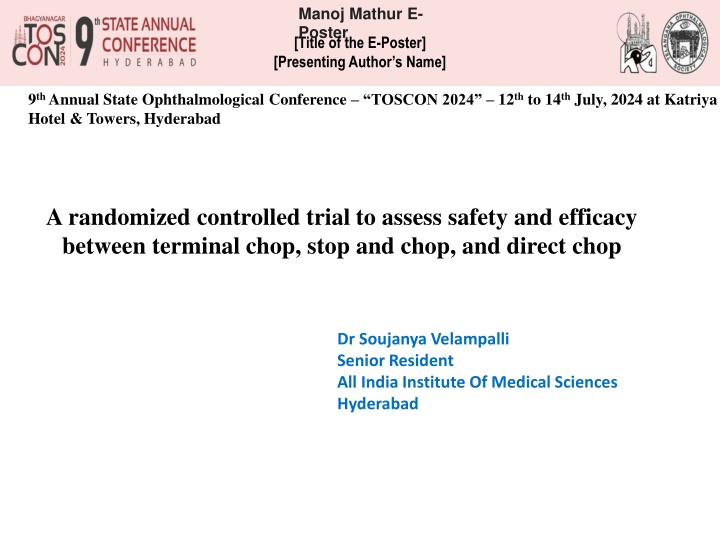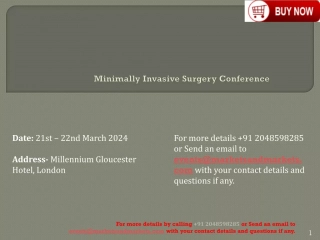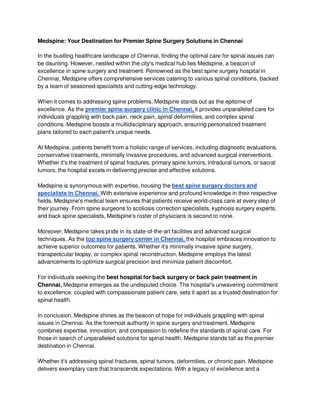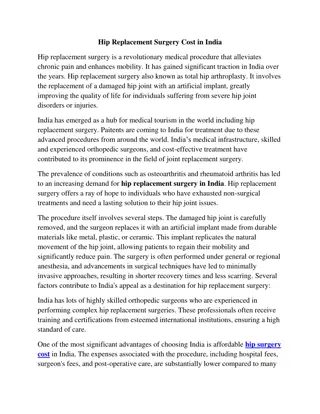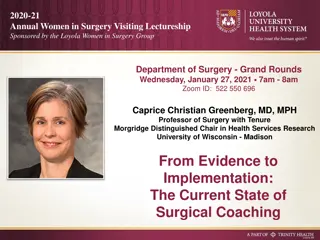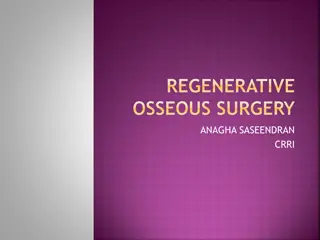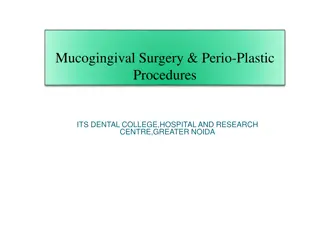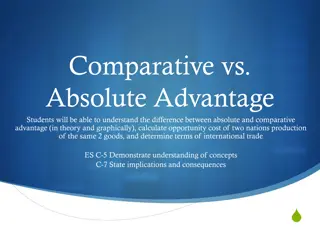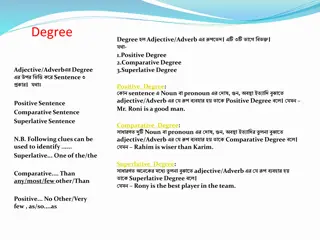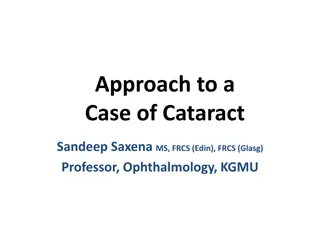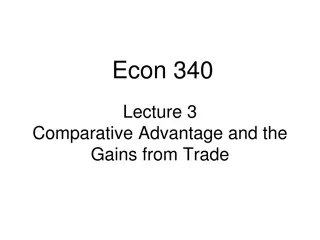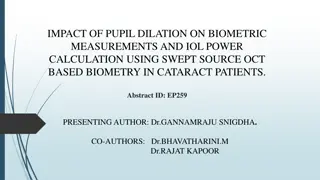Comparative Analysis of Cataract Surgery Techniques
The study compared safety and efficacy of terminal chop, stop and chop, and direct chop techniques in cataract surgery. Results showed terminal chop had advantages in terms of corneal thickness, endothelial cell loss, and cumulative dissipative energy. Terminal chop demonstrated improvement compared to other techniques.
Download Presentation

Please find below an Image/Link to download the presentation.
The content on the website is provided AS IS for your information and personal use only. It may not be sold, licensed, or shared on other websites without obtaining consent from the author.If you encounter any issues during the download, it is possible that the publisher has removed the file from their server.
You are allowed to download the files provided on this website for personal or commercial use, subject to the condition that they are used lawfully. All files are the property of their respective owners.
The content on the website is provided AS IS for your information and personal use only. It may not be sold, licensed, or shared on other websites without obtaining consent from the author.
E N D
Presentation Transcript
Manoj Mathur E- Poster [Title of the E-Poster] [Presenting Author s Name] 9thAnnual State Ophthalmological Conference TOSCON 2024 12thto 14thJuly, 2024 at Katriya Hotel & Towers, Hyderabad A randomized controlled trial to assess safety and efficacy between terminal chop, stop and chop, and direct chop Dr Soujanya Velampalli Senior Resident All India Institute Of Medical Sciences Hyderabad
INTRODUCTION The goal in developing new techniques of cataract surgery is to provide a safer, more efficient surgical experience with the lowest complication rate and endothelial cell loss. The Phacoemulsification. chop procedure is the principal step for Many methods can be used to crack a nucleus, such as divide-and-conquer, phaco-chop,and stop-and-chop. Various advancements in phaco-chop techniques like vertical chop, crater and chop, crater and split, drill and crack, multilevel chop,and terminal chop have been described.
Terminal chop uses a specially designed chopper called Terminator chopper which initiates a unique dispersive mechanical force to create a full-thickness nuclear crack at the weakest part of the equator which traverses through the center causing a full nuclear crack by instrumental separation
MATERIAL AND METHODS Prospective randomized clinical trial Compared phacoemulsification, stop-and-chop, direct chop, and terminal chop. three different techniques of 307 eyes were recruited to the study, 102 to the stop-and-chop group, 103 to the direct chop group, and 102 to the terminal chop group. The pre- and postoperative parameters studied, included central corneal thickness (CCT), ultrasonic time (UST), endothelial cell density (CD), cell loss and effective phacoemulsification time (EPT), average cumulative dissipative energy (CDE), and best-corrected visual acuity
RESULTS Statistical differences were found between the techniques with regard to postoperative CCT among NS II and NS IV cataracts with the lowest values in the terminal chop group among NS II, NS III, and NS IV cataracts. Endothelial cell loss was minimum with a terminal chop in NS II and NS IV cataracts . CDE was minimum in terminal chop across different cataract densities.
CONCLUSION Terminal chop showed improvement over the other two techniques in terms of CDE and was comparable to them with regard to other parameters.
